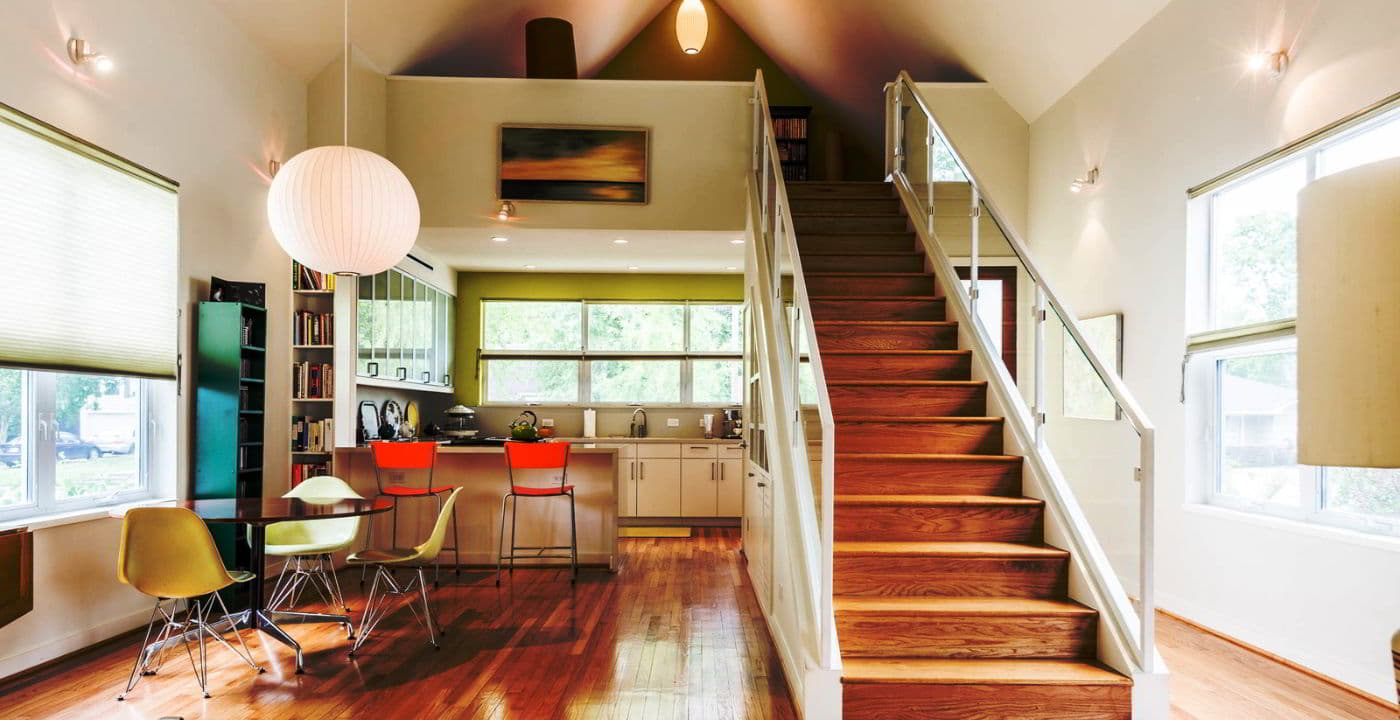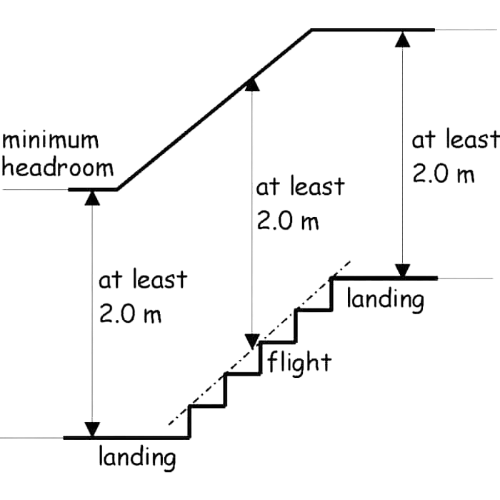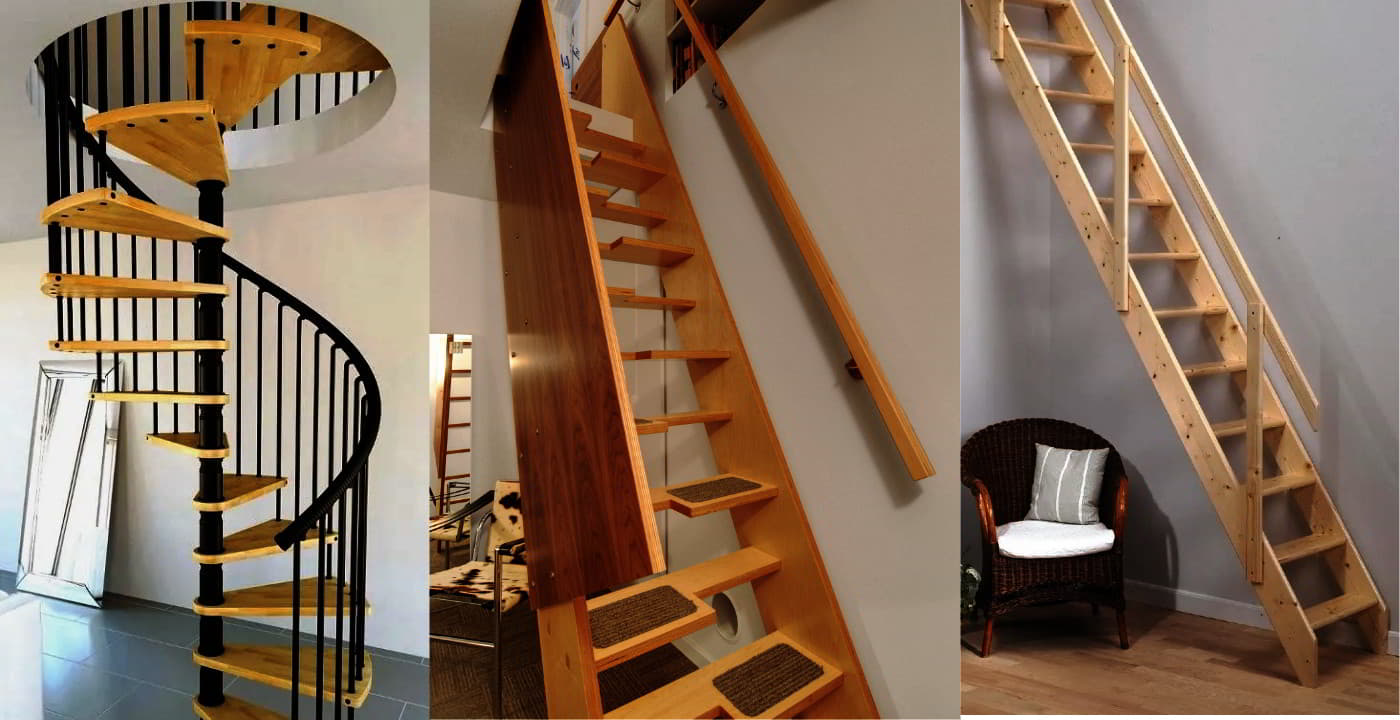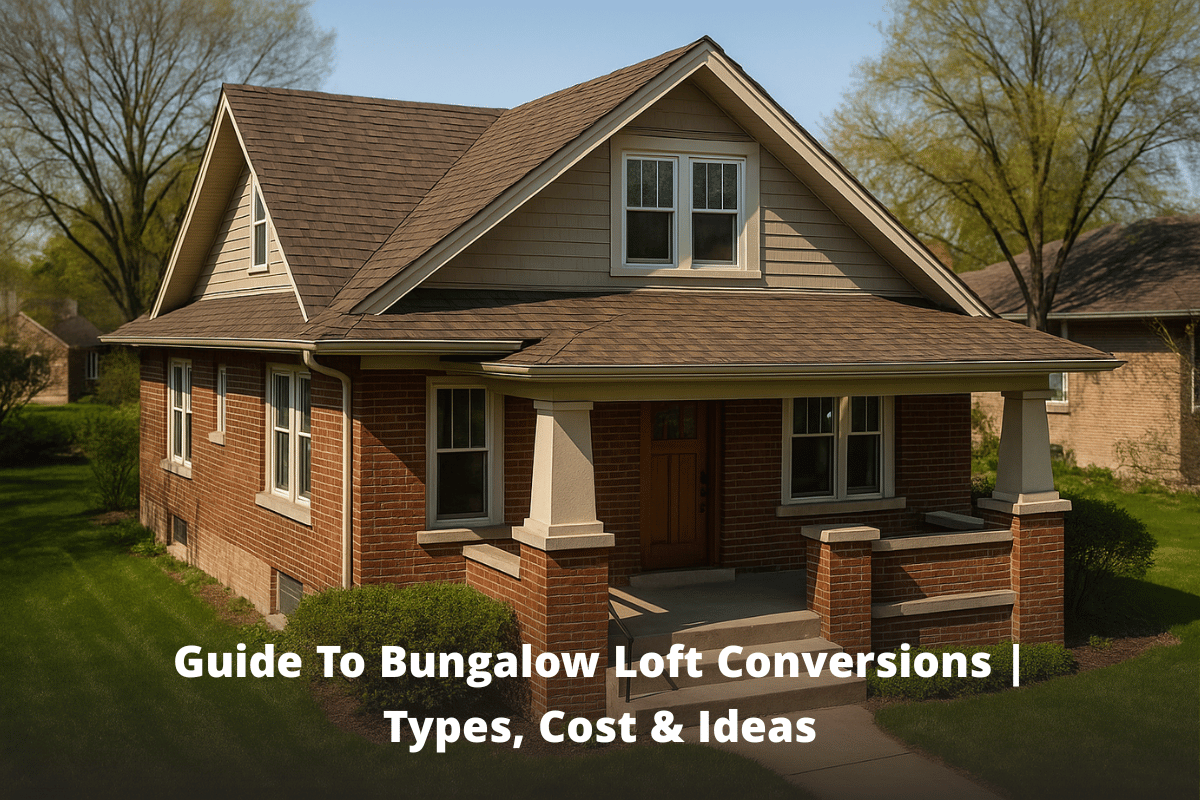
Until humans learn to fly (or just jump really high), there’s always going to be a need for stairs to get into your new loft conversion. Planning your loft conversion stairs is an important part of the loft conversion process and needs to be done correctly for the purposes of both building regulations and logistics.
Determining where to put stairs for a loft conversion isn’t always easy. There are some official regulations you’ll need to consider that may make the most obvious location impossible. Thankfully, though, we’re here with a range of loft stairs ideas (as well as all of the technical know-how) to help you get things just right when it comes to the task of loft stair placement.
Understanding the Building Regulations for Loft Conversion Stairs
There are two relevant regulations that impact the stairs for your loft room. The first is to do with stair headroom, ensuring that it’s safe for someone to walk up and down the stairs without causing injury. The second pertains to the fire regulations that are essential to keep your home, and the people within it, safe.
1. Headroom Regulations
Building regulations in the UK for standard stairs dictate that there must be a minimum of 2m clear headroom along the length of a stairway. Additionally, there are minimum dimensions for step sizes, handrails and other factors.
Thankfully, the rules are less stringent for loft stairs. Understanding that lofts often have sloping ceilings, there is some adjustment to the height regulations, as follows:
- Low-ceiling side minimum headroom must be 1.8m.
- Staircase centre headroom must be 1.9m.
- Inner side headroom must be 2m.
These small 10cm allowances may not sound like much, but they can make a huge difference, enabling loft stair designs that would otherwise be impossible.
Because the headroom regulations are so important, it’s essential to consider them very early in the loft conversion planning process. Often the loft conversion can be developed to increase the headroom, such as with a dormer window, making more room for the much-needed stairwell.

2. Fire Regulations
The stairs act as part of the escape corridor from the newly converted top of your home to the outside, and thus are an important consideration for fire regulations. They have to be fire resistant to provide a minimum of 30 minutes of protection from fire. Should partition walls be added as part of the new stairs, those walls also need to be rated for the same 30 minutes’ fire resistance. A suitable fire-door is required at either the top or bottom of the stairs as part of a fire-rated lobby.
Locating and Designing a Staircase for Loft Conversion

One of the key questions we’re asked by almost every customer looking to expand their loft relates to the positioning of the new loft staircase. Often the best location is directly above the existing staircase. It’s the most space-efficient option and has the advantage that the loft conversion feels part of the original house design, and not a later addition.
When that’s not possible, however, portioning off part of an existing room to make the space for the new staircase provides a suitable alternative. Of course, to justify the loft conversion, it’s important to design this in such a way that the existing room isn’t too negatively affected by the new staircase.
Stairs have a top as well as a bottom, so it’s important to consider how and where they will interact with the new loft space. Do you want the stairs to appear in the middle of the room or at the side? Would a small landing lobby be a good addition to the plans (helping with fire regulations) or do you want to have as much room as possible? A proper loft conversion plan takes the staircase into account from every angle.
Staircase designs do vary. Not all loft stairs have to be full sets of stairs to match the main staircase. Options include:
Spiral Stairs
For many people, a spiral staircase is a desirable style with the advantage of a different footprint to standard stairs. As well as practicality, spiral stairs offer an exciting aesthetic for the home that evokes thoughts of towers and hidden libraries. You can enhance the look further with some distinctive lighting.
With varying widths of spiral stairs available, they can take up less room than a standard stairway and are a great option for those wishing to preserve as much of the existing floor space as possible while still looking for a full staircase. Like many alternative stair types, though, spiral stairs can be troublesome for those with mobility problems, so this should be considered well in advance.
Alternating Tread Stairs
Not dissimilar to those found on boats, alternating tread stairs have a single-foot sized step to trim the width significantly. They can save a great deal of space where it is a premium and remain a safe and solid staircase, with a sturdy bannister. Alternating tread stairs are great to avoid taking too much floorspace away when situating the steps in an existing room.
Unlike traditional stairs, however, the step height and single-foot method for alternating tread stairs makes them difficult for younger children to navigate, and may be unsuitable if the primary use of the loft conversion is for young children’s bedrooms.
Fixed Ladder Stairs
A fixed ladder is a great space saver. While retractable ladders are not acceptable due to regulations, a 60° fixed ladder takes the minimum amount of floorspace possible, allowing you to make the most of your new loft conversion.
While they can be physically more difficult to get up and down, and are unsuitable for those with mobility issues, fixed ladder stairs are a cost-effective solution for maximum space saving.
Final Thoughts on Planning the Stairs
When it comes to your loft conversion stairs, they aren’t an additional cost, but rather factored into every project as part of the overall total. However, that doesn’t mean that there aren’t still savings to be made, so do consider the impact your stairs will have on the budget.
As the staircase is an integral part of every loft conversion, here at London Lofts, we discuss your stair requirements from the outset of the project, making sure all regulations are considered well in advance to avoid any issues later on.
With a team of experienced loft conversion designers, we’re able to advise you on all aspects of the stairs and will work with you to ensure the perfect solution.




